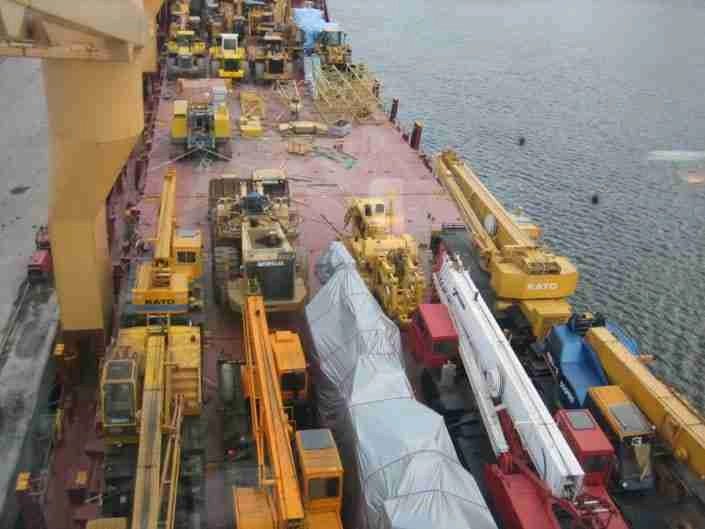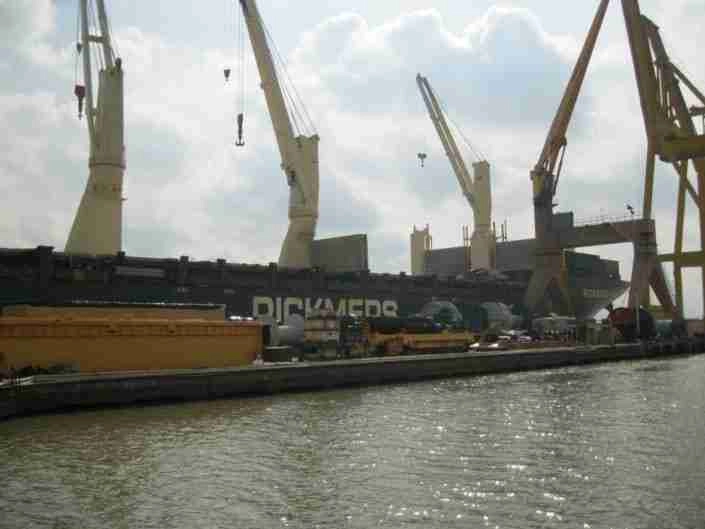Regional Differences in International Shipping Costs and How to Plan for Them

Shipping costs can significantly impact a business’s bottom line and influence pricing strategies, supply chain management, and customer satisfaction. As such, having a deep understanding of what drives these costs and how they vary across different regions is paramount for businesses engaged in international trade. With the right strategies, companies can mitigate these costs, enhance operational efficiency, and capitalize on opportunities in diverse markets.
Understanding Freight Shipping Rates
Shipping costs vary widely depending on several factors, including distance, weight, and the specific routes taken. Freight shipping rates are influenced by:
- Distance and Route: The farther the destination, the higher the cost. However, popular routes with frequent service may offer competitive rates. This is because carriers can optimize capacity and reduce operational costs on well-traveled routes. Conversely, routes to less accessible locations might incur additional costs due to limited carrier availability and increased logistical challenges.
- Weight and Volume: Heavier and larger shipments cost more. Carriers use dimensional weight pricing to calculate costs for bulky but lightweight items. This pricing model encourages businesses to optimize packaging to minimize unused space, thereby reducing costs. Efficient packing strategies not only lower shipping expenses but also contribute to environmental sustainability by minimizing waste.
- Mode of Transport: Air freight is faster but more expensive than ocean freight. Choosing the right mode depends on the urgency and nature of the shipment. While air freight is ideal for high-value or perishable goods, ocean freight is more suitable for bulk items that are less time-sensitive. Rail and road transport can also play crucial roles, particularly for regional distribution, offering a balance between cost and speed.
- Fuel Prices: Fuel surcharges can fluctuate, affecting overall shipping costs. Monitoring fuel price trends can help predict changes in shipping rates. Businesses can mitigate this volatility by negotiating fuel surcharges in their contracts or exploring alternative energy sources where feasible. Additionally, optimizing routes and investing in energy-efficient logistics solutions can further buffer against rising fuel costs.
- Customs and Tariffs: Import duties and taxes vary by country and can significantly impact total shipping expenses. Understanding the customs regulations of destination countries is essential to avoid unexpected costs and delays. Engaging with customs brokers or utilizing trade agreements can help streamline this process, ensuring compliance and potentially reducing tariffs.

Shipping Cost Comparison
To effectively manage shipping expenses, businesses must compare shipping costs across different carriers and routes. Here’s how you can do it:
Use Shipping Calculators
Most major carriers offer online shipping calculators. These tools provide estimates based on the shipment’s weight, dimensions, and destination. By comparing estimates from different carriers, businesses can identify the most cost-effective options. Additionally, these calculators can assist in projecting potential costs for different scenarios, aiding in budgeting and strategic planning.
Shipping calculators not only facilitate cost comparisons but also enable businesses to explore alternative routes and shipping methods. This adaptability can be crucial in responding to changes in market conditions or supply chain disruptions. Regularly updating these calculations ensures that businesses remain agile and responsive to fluctuations in shipping costs.
Consider Shipping Alliances
Shipping alliances are partnerships between carriers to optimize route efficiency and reduce costs. Participating in an alliance can provide access to better rates and services, especially on less common routes. These alliances can also enhance reliability and service quality by pooling resources and sharing infrastructure.
By aligning with shipping alliances, businesses can benefit from economies of scale and increased negotiating power. Such partnerships can lead to more flexible shipping solutions, allowing businesses to better meet customer demands and navigate complex logistics environments.
Leverage Technology
Technology plays a significant role in managing international shipping costs. Shipping management software can track shipments, compare rates, and automate booking processes. These tools can save time and money by optimizing shipping decisions. They also provide real-time data and analytics, enabling businesses to make informed decisions and anticipate potential disruptions.
Advanced technologies such as blockchain and IoT are revolutionizing the logistics industry by enhancing transparency and efficiency. By leveraging these innovations, businesses can improve supply chain visibility, reduce errors, and foster more collaborative relationships with logistics partners.
Regional Differences in Shipping Costs
Shipping costs vary significantly by region due to differences in infrastructure, regulations, and market demand. Understanding these regional variations is essential for businesses operating in multiple international markets.
North America
North American shipping costs are generally moderate due to well-developed infrastructure and competitive carrier options. However, shipments to remote areas can incur higher costs. Businesses should consider consolidating shipments to minimize expenses. The presence of multiple trade agreements, such as USMCA, also plays a role in moderating costs by reducing tariffs and facilitating smoother cross-border trade.
Moreover, North America’s diverse geography necessitates a flexible approach to logistics, with options like rail, road, and air transport varying in cost-effectiveness depending on the specific regions involved. Leveraging regional distribution centers can further optimize logistics, reducing transit times and costs.
Europe
Europe’s dense network of roads and ports facilitates efficient shipping. However, costs can vary between Eastern and Western Europe. Western Europe tends to have higher rates due to higher labor costs and stricter regulations. Exploring alternative ports and routes can help reduce expenses. Additionally, intra-European trade benefits from the EU’s single market, which simplifies customs procedures and reduces administrative costs.
Businesses can also capitalize on Europe’s emphasis on sustainability by adopting green logistics practices, which may qualify them for incentives or reduced fees. Staying abreast of regulatory changes, such as those related to Brexit, is crucial for maintaining efficient operations in this dynamic market.
Asia
Asia is a major hub for global trade, with many shipping routes passing through the region. Shipping costs are generally competitive, but they can fluctuate based on demand and geopolitical factors. Businesses should stay informed about regional developments to anticipate changes in rates. The region’s rapid economic growth and infrastructure investments present both opportunities and challenges for logistics planning.
China’s Belt and Road Initiative, for example, is reshaping trade routes and could influence future shipping costs and logistics strategies. Businesses should evaluate how such developments might affect their supply chains and explore opportunities for strategic partnerships within the region.
Africa
Shipping to Africa can be challenging due to limited infrastructure and regulatory hurdles. Costs are often higher, particularly for landlocked countries. Partnering with local logistics providers can help navigate these challenges and reduce shipping expenses. These local partnerships can offer valuable insights into navigating regulatory environments and optimizing last-mile delivery.
Investments in infrastructure improvements and regional trade agreements, such as the African Continental Free Trade Area (AfCFTA), may gradually reduce shipping costs and barriers. Businesses should monitor these developments and adjust their strategies to capitalize on emerging opportunities.
Latin America
Latin American shipping costs vary widely due to diverse geography and infrastructure. Coastal regions typically have lower costs compared to inland areas. Businesses should consider multimodal shipping solutions to optimize costs. Utilizing both ocean and overland routes can enhance efficiency and reduce transit times.
Regional trade agreements, such as Mercosur, can also influence shipping costs by reducing tariffs and simplifying customs procedures. Staying informed about political and economic developments is crucial, as these factors can significantly impact logistics operations in the region.

Planning for Shipping Cost Variations
Understanding regional differences in shipping costs is only half the battle. Effective planning is crucial to manage these variations and maintain profitability.
Budget for Fluctuations
Shipping costs can fluctuate due to factors like fuel prices and seasonal demand. Creating a flexible budget that accounts for potential increases can help businesses avoid financial strain. Businesses should also consider establishing contingency funds to manage unexpected spikes in shipping costs.
Additionally, developing a robust forecasting model that incorporates historical data and market trends can enhance budgeting accuracy. This proactive approach allows businesses to adjust pricing strategies and maintain competitive margins.
Negotiate Contracts
Negotiating long-term contracts with carriers can lock in favorable rates and protect against market volatility. Building strong relationships with carriers can also lead to better service and support. Businesses should regularly review and renegotiate contracts to ensure they remain competitive.
Exploring collaborative partnerships with carriers can also yield mutual benefits, fostering innovation and efficiency in logistics operations. These partnerships may include joint ventures or shared technology platforms that enhance service delivery and reduce costs.
Optimize Supply Chain
Streamlining the supply chain can reduce shipping costs. Consider options like consolidating shipments, optimizing packaging, and choosing the most efficient routes and modes of transport. Implementing lean supply chain practices can minimize waste and enhance operational efficiency.
Investing in supply chain technology, such as warehouse management systems and predictive analytics, can provide greater visibility and control over logistics processes. These tools enable businesses to identify and address inefficiencies, ensuring optimal performance across the supply chain.
Stay Informed
Monitoring industry trends and geopolitical developments can provide insights into potential cost changes. Staying informed enables businesses to make proactive decisions and adjust strategies as needed. Engaging with industry associations and participating in trade forums can enhance knowledge sharing and collaboration.
Regularly reviewing market reports and forecasts can help businesses anticipate changes in shipping costs and adjust their operations accordingly. By staying agile and responsive, businesses can navigate the complexities of international shipping and capitalize on emerging opportunities.
Conclusion
International shipping is a complex but essential aspect of global business. By understanding regional differences in shipping costs and implementing strategic planning, businesses can navigate these challenges effectively. Comparing rates, leveraging technology, and optimizing supply chains are key to managing shipping expenses and maintaining competitiveness in the global market.
Understanding and planning for these variations in shipping costs is not just about saving money; it’s about creating a more efficient and resilient business operation. With the right approach, businesses can turn shipping challenges into opportunities for growth and success in the international arena. This strategic focus not only supports financial sustainability but also enhances customer satisfaction and market reach, driving long-term success in the global economy.
Streamline Your Shipping Logistics with Express Freight Management
Are you ready to take control of your shipping costs and enhance your logistics efficiency? Partner with Express Freight Management today! Our expert team is dedicated to providing tailored solutions that meet your unique shipping needs. From optimizing routes to leveraging advanced technology, we help you navigate the complexities of international shipping with ease.
Contact us now to discover how we can help you streamline your shipping logistics and improve your bottom line!
